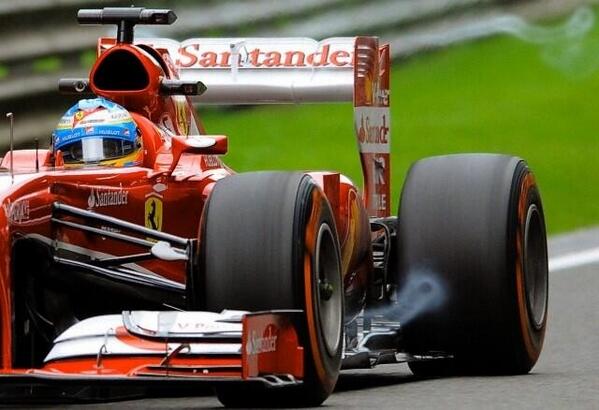get your hammers out, finished this on modern sidepod on formula one cars...i guess the term modern in formula one only last a year or more only...oh well
- Login or Register
No account yet? Sign up

Good job, that's a nice explanation.
thanks for the complimentvariante wrote: ↑16 May 2020, 11:29Good job, that's a nice explanation.
But it seems that a couple of things were out of focus (minute 5 or so): the downwash effect is not there just to fill the gap left by the outwashed flows, but it is actively contributing to downforce production. In fact, the downwashed air can be used to build up pressure on top of the floor and to offer the Rear Wing a better Angle of Attack, neutralizing the detrimental upwash coming from the Front Wing.
Without wanting to be snarky analysis of a front wing should be performed at least with front wheels. But preferably with a quarter model (nose and wing hangers/turning vanes up to the cockpit opening). Otherwise it's pretty meaningless.bosyber wrote: ↑18 May 2020, 14:21Good stuff Pierre!
I am not sure a) whether this is the right place to post this (since strictly speaking, it's about the last generation of front-wings), and b) whether it has been posted around here already, but, it looks interesting enough for me, so:
https://twitter.com/TimoteoBriet/status ... 7635257344
Note that it's actually a thread with several more images
Yes, I do agree, apart from pretty pictures, I took this as a first step to see what the wing does on it's own (I am also assuming it is at least mirrored right now), before putting a static, then rotating, wheel in there; when looking at cornering, it would definitely first need those wheels, and possibly a nosecone as well.jjn9128 wrote: ↑18 May 2020, 14:37Without wanting to be snarky analysis of a front wing should be performed at least with front wheels. But preferably with a quarter model (nose and wing hangers/turning vanes up to the cockpit opening). Otherwise it's pretty meaningless.bosyber wrote: ↑18 May 2020, 14:21Good stuff Pierre!
I am not sure a) whether this is the right place to post this (since strictly speaking, it's about the last generation of front-wings), and b) whether it has been posted around here already, but, it looks interesting enough for me, so:
https://twitter.com/TimoteoBriet/status ... 7635257344
Note that it's actually a thread with several more images

I think not, won't they always try to merge, to find a pressure equilibrium??godlameroso wrote: ↑18 Feb 2021, 17:12Here's a thought, can vortecies interact similar to mechanical gears? Where one can turn the other, and phenomena like gear reduction and mechanical advantage are present?
Do the two counter rotating vortecies from the diffuser merge?Holm86 wrote: ↑18 Feb 2021, 17:37I think not, won't they always try to merge, to find a pressure equilibrium??godlameroso wrote: ↑18 Feb 2021, 17:12Here's a thought, can vortecies interact similar to mechanical gears? Where one can turn the other, and phenomena like gear reduction and mechanical advantage are present?
I think two vortices rotating the same direction will enhance eachother, two rotating opposite direction will cancel eachother out.godlameroso wrote: ↑18 Feb 2021, 22:11Do the two counter rotating vortecies from the diffuser merge?Holm86 wrote: ↑18 Feb 2021, 17:37I think not, won't they always try to merge, to find a pressure equilibrium??godlameroso wrote: ↑18 Feb 2021, 17:12Here's a thought, can vortecies interact similar to mechanical gears? Where one can turn the other, and phenomena like gear reduction and mechanical advantage are present?